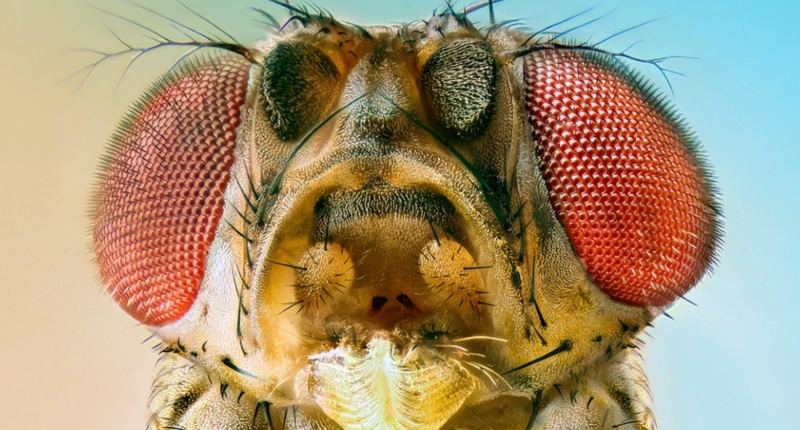Scientists have discovered a new type of taste receptor in fruit flies that enables them to detect alkaline substances and avoid toxic meals and surfaces. The receptor detects high pH, which could be harmful to the insects. The finding could potentially inform future research into the physiological mechanisms underlying alkaline taste in other organisms. The researchers found that the alka gene expresses a receptor protein that is stimulated by alkaline solutions, and in the presence of a base, the receptor protein opens a channel in the cell membrane, letting negatively charged chloride ions escape the neuron. This conveys a message to the fly’s brain to avoid the food. Although the specific finding may not be directly applicable to vertebrates, it could prompt research into whether vertebrates have similar types of chloride receptors and whether they experience a distinct alkaline taste. The study’s findings could bring new insights into how insects respond to environmental cues, such as in decisions on where to lay their eggs, as well as for pest control.
Researchers have recently discovered a new type of taste receptor that allows fruit flies to detect and avoid toxic alkaline substances. The receptor enables the flies to sense substances with high pH levels, which could be harmful to them. This ability to detect alkaline foods is a significant finding because most animals operate within a narrow pH range. The receptor could also inform future research on the mechanisms underlying alkaline taste in other organisms.
The study, published in Nature Metabolism, investigated whether fruit flies have a receptor specific to high pH. The researchers presented the flies with a Petri dish containing a sweet gel with a neutral pH of 7 on one side and an alkaline gel on the other side. The alkaline gel’s pH increased as the study progressed, and the researchers observed that the flies rejected the alkaline gel as the pH level increased. However, one group of flies was not as good at distinguishing between the two meals. Screening these flies revealed that they had a mutation in a gene that the researchers named alkaliphile (or alka for short). The gene was active in taste neurons at the fleshy tip of their elongated proboscis, as well as in cells at the ends of their feet and antennae.
While previous studies have detailed the receptors, cells, and neural circuits involved in detecting sour and acidic tastes, sensing alkaline substances is not well understood. Some early work in humans and cats suggests that the alkaline sensation could be a type of taste, but this has not been confirmed. Researchers believe that the discovery of the new taste receptor in fruit flies could potentially inform future research into the physiological mechanisms underlying alkaline taste in other organisms.
The discovery of a new taste receptor in fruit flies is an unexpected finding in such a well-studied animal. The study’s lead author, Yali Zhang, a neurobiologist at the Monell Chemical Senses Center in Philadelphia, Pennsylvania, presented the research with a Petri dish of sweet gel, one half of which was maintained at a neutral pH of 7, while the other half was mixed with sodium hydroxide to make it alkaline. The team discovered that the higher the pH of the alkaline food, the more the flies rejected it for the more neutral cuisine. The researchers’ finding that fruit flies have a receptor specific to high pH is an exciting development in the field of taste research.
A recent study has discovered that the alka gene expresses a receptor protein in fruit flies, which is stimulated by alkaline solutions. This receptor protein opens a channel in the cell membrane to let negatively charged chloride ions escape the neuron in the presence of a base, conveying a message to the fly’s brain to avoid the food. This is a unique discovery because most sensory receptors involve channels that control the movement of positively charged ions into the cell.
The researchers used a technique called optogenetics to artificially activate cells expressing the alka gene. This caused the insects to recoil their proboscis from a sugary solution, apparently under the impression that it was too alkaline to consume. However, the specific finding may not be directly applicable to vertebrates because they do not have the alka gene. Nonetheless, the study could prompt research into whether vertebrates have similar types of chloride receptor and whether they experience a distinct alkaline taste.
The discovery in fruit flies could provide new insights into how insects respond to environmental cues, such as in decisions on where to lay their eggs. It could also have implications for pest control.
Don’t miss interesting posts on Famousbio









